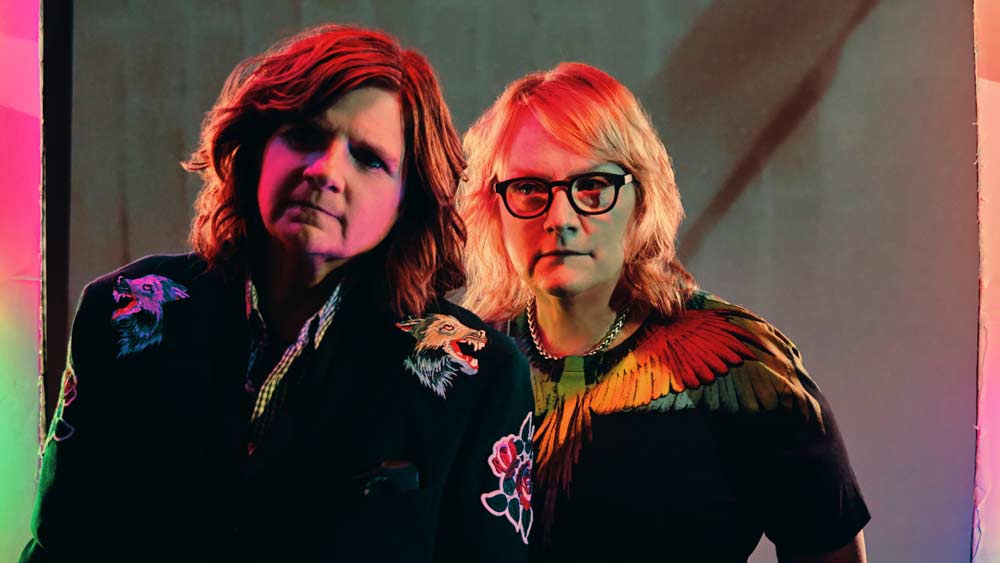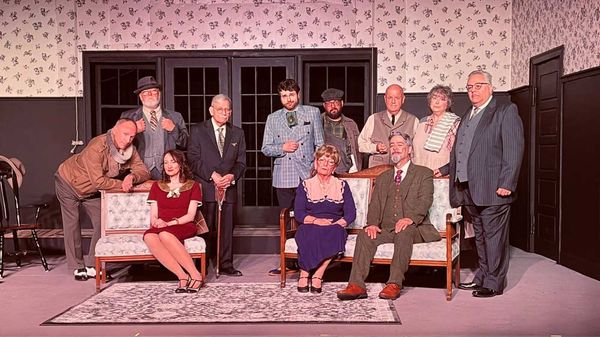Apr 1
Review: 'Indigo Girls: It's Only Life After All' Surveys the Times and Career of an Iconic Out Duo
Kilian Melloy READ TIME: 3 MIN.

Alexandria Bombach has made documentaries that chart the struggles of photojournalists under Taliban repression in Afghanistan, the heroism of ISIS sexual slavery survivor Nadia Murad, and the work of ecologically minded people to help foster preservation efforts. Now Bombach turns her camera on another cultural force: Amy Ray and Emily Saliers, the openly LGBTQ+ rock duo known as the Indigo Girls.
"Indigo Girls: It's Only Life After All" documents how, from a friendship in elementary school to performing their first gigs in high school and even now, Ray and Saliers have been each others' touchstones and creative partners. Never has there been a whisper of romance between them, despite the fantasies that curious fans might entertain; instead, the two have found family and unshakeable support in one another.
Their music has been a lifeline for generations of queer people – something the two musicians talk about, as do various fans Bombach interviews. Ray has gathered an extensive collection of archival materials – video and cassette tapes – that Bombach draws on for the film, and as the two musicians discuss their creative evolution, we can glance back with them to the early performances they discuss. (They both cringe to recall their early stage shows, though fans won't see why.)
We also get a sense of the sexism and homophobia they faced. It wasn't until 1991 that Saliers came out; Ray had been out long before, and though it isn't clear how aware the general public was before 1991 that the duo were queer, there are plenty of hints in the archival footage we see that they faced skepticism and hostility in some quarters. One young man avers that, being gay, the duo must wrote music that carries "a spacial message" – an "agenda," in other words – and the duo recollect their shows being picketed by the anti-gay crowd. "The hatefulness toward queers is painful to me," Saliers confesses, "and I was sensitive."
But for their fans, their voice was essential. "They were almost this unspoken permission," one man recalls, adding that, for him, "a lot of healing went on" to the strains of the duo's music.
The healing went both ways, though. "I can honestly say that music saved me in high school," Saliers recounts (that might be a surprise to Ray, whose perception was that Saliers was popular). Ray, meanwhile, explains that, for her, "the healing... is in the ability to reach out to somebody else and empathize with them..."
That sexism and homophobia had real consequences for their careers; Saliers and Ray recall being "accused, and I mean accused, of being 'earnest,'" a transgression for female singers, but something that male singers could easily get away with. They also reckon that being out, and letting their music be a force for political and social expression, probably "diminished" their career.
For Saliers, the pressures were especially consequential. She speaks frankly about her dependence on alcohol, the toll it took on her marriage and on her creative partnership with Ray, and how the accomplishment of being sober has become a well-earned point of pride.
The Indigo Girls continue to be a force, with a recently released new single and an entire movie – the feature film "Glitter & Doom" – built around their music. This documentary reminds us why they've been so important for so long.
"Indigo Girls: It's Only Life After All" reaches theaters on April 10 for a one-night-only event, then premieres on VOD May 7.
Kilian Melloy serves as EDGE Media Network's Associate Arts Editor and Staff Contributor. His professional memberships include the National Lesbian & Gay Journalists Association, the Boston Online Film Critics Association, The Gay and Lesbian Entertainment Critics Association, and the Boston Theater Critics Association's Elliot Norton Awards Committee.




